There are some places where creativity can get you better results than you expected.
However, when it comes to installing bathroom tiles, you will need to ensure precision to ensure the success of the project.
It may seem like a good idea to use a substitute for bathroom tile spacers, but this isn’t necessarily a good approach.
DIY tile installers will learn the hard way that they should have used the tile spacers for the job when they discover that the project isn’t going exactly right.
At best, the substitute saves the DIYer some effort and time on the project.
But in the long run, the oversight leads to damage to the tools, the tiles, and possibly, even you.
There are many different tools that are essential for any tile installation project, and bathroom tile spacers are one of them.
What Is The Optimal Bathroom Tile In Terms Of Size?
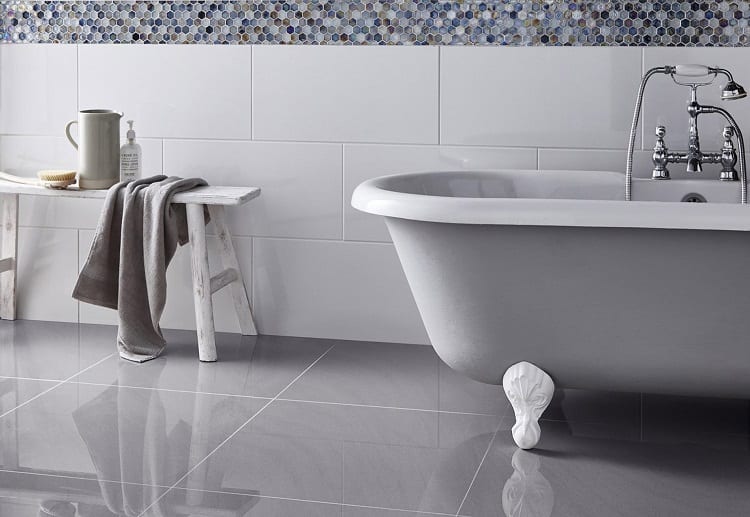
The best part about using ceramic or porcelain tiles for the bathroom is that it is a pretty flexible choice.
They come in a wide range of sizes from the large format tiles to small mosaic tiles.
This ensures that you can choose different ones for your shower and bathtub surrounds, walls, and general flooring.
However, this doesn’t mean you can just use any bathroom tile size for every application.
For example, the large format tiles can look simply too awkward and unsightly in the bathroom.
You will need to install certain full-sized tiles in order for the bathroom to look aesthetically appealing.
Nevertheless, the bathroom tile size recommendations aren’t set in stone.
You can always experiment with the different tile sizes, but here are our recommendations for the best bathroom tile size for different aspects of the bathroom.
Bathroom Tile Size for the Shower Floor
Generally, people use smaller sized tiles for pans or floors. Your safest bet could be tiles at 1×1 inch to 4×4 inches.
The idea is that the bathroom tile size should be small enough for the installer to be able to form gentle contours.
This will ensure that the flooring will pitch in the correct way; the water will be able to move in the right way towards the drain so that you don’t have to deal with pools of water lingering in the shower.
The smaller the bathroom tile size, the better it is for gripping.
By installing smaller tiles, you are essential, including more seams between the tiles.
This will ensure that more grout is laid between each tile.
The grout lines provide users with the friction you need to ensure that you don’t slip in the shower.
Bathroom Tile Size for the Shower Wall
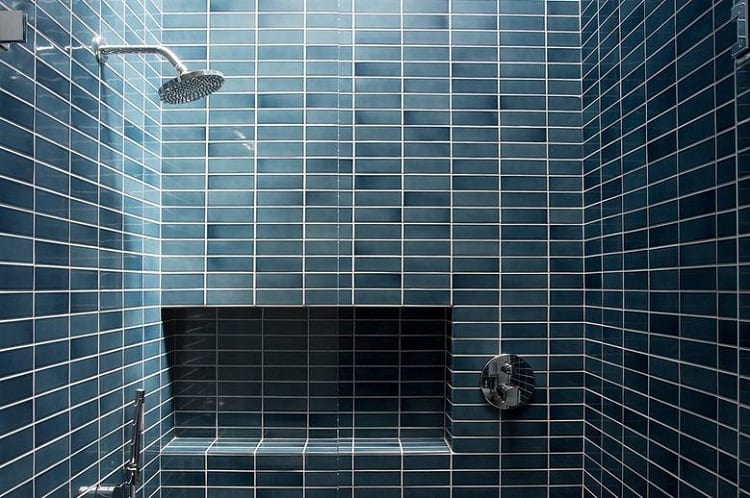
It is better to use larger bathroom tile sizes for the shower walls.
Our recommendation would be to use tiles that are 4 by 4 inches in size to large format tiles that are 15 by 30 inches.
From an overall visual perspective, smaller tiles will create a busy appearance.
They are all difficult to clean since more seams mean more grout to deal with.
For the alcove bathtubs, the large format tiles that go up to 30 inches are the biggest ones that you should pick.
Those spaces are usually at 60 inches in length, so large format tiles at 30 inches are the most you should go up to.
Using larger tiles will require you to cut them down for size.
It is more economical and easier to just get tiles that already fit the space properly.
Bathroom Tile Size for the Bathroom Wall
Bathroom walls usually look best with tiles of 4 by 4 inches in size.
Bathroom walls are usually longer than they are high, which is why it is also possible to use tiles that are longer than they are high.
If you want slightly bigger tiles, you can use tiles that are 12 by 24 inches.
Some people also use subway tiles that have 1:2 ratios. It is recommended to use listellos to get the maximum narrow and long ceramic tile.
Bathroom Tile Size for the Bathroom Floor
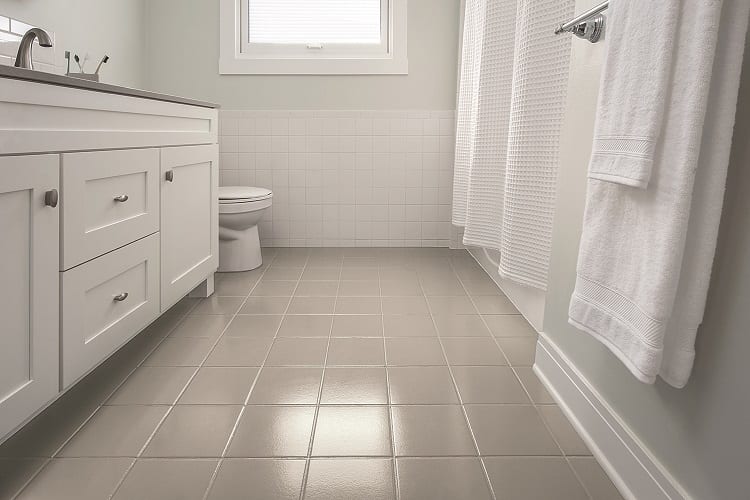
The flooring for the bathroom is the best one in terms of the range of bathroom tile size possibilities.
You can choose any from a large format to mosaic tiles. You should, of course, keep friction in your mind when you are choosing the tile.
Mosaic tiles are usually the best option for bathroom flooring since it provides users with a superior grip. It works with both dry and wet feet.
Other conventional 12 by 12-inch tiles are also easy to cut according to the bathroom dimension; you can cut them with rail tile cutters and wet tile saws.
Even with a small bathroom, you will be able to use a good amount of full-sized tiles.
You can also use 4 by 4-inch sized tiles for the powder rooms and bathrooms.
If you want to use the large format tile for the bathroom, you should calculate the square footage of the space first.
This can help you narrow down how many full-sized titles will actually be used.
At a minimum, you should have three tiles across the width of the bathroom and four tiles for the length.
If there are fewer tiles on the width, it can look quite awkward.
What about Spacers?
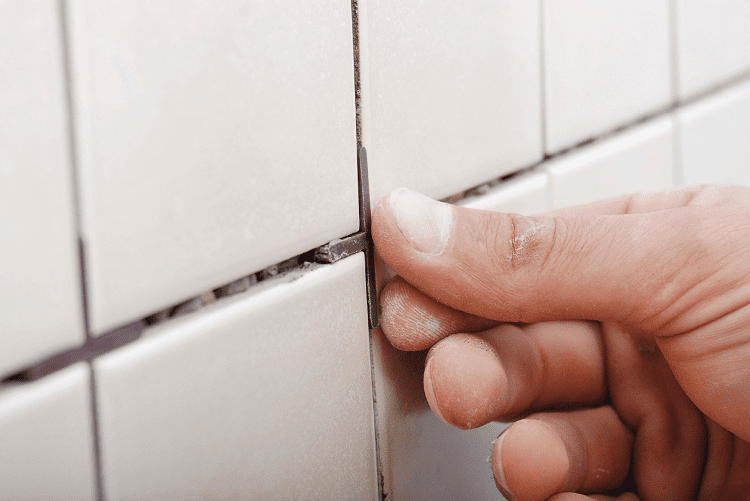
Tiles can expand when the temperature of the room reaches a certain level.
This is why tiles shouldn’t be directly placed next to each without leaving small spaces between the slates where the grout lines go.
This is where bathroom tile spacers come in handy.
Bathroom tile spacers are small plastic pieces that allow DIY enthusiasts to make sure the line of the tile slates properly.
You will able to keep a good distance between the tiles. Spacers come in many different types and sizes. They are made with ceramic, wood, or plastic.
Spacers help to keep all the tiles at an equal distance from each other but have a few other important applications too.
You can use bathroom tile spacers as a separation point for when the tile and the wall meet. It can also help to create expansion joints.
Spacers can be used for both wall and floor tile projects, as long as you get one that is the right shape and size.
It is also extremely helpful when you are creating the initial outline and dry-laying the tiles down.
You will be able to get an overview of the project so that you have the exact measurements for the project. You will be able to get an even look at everything.
Different Type of Spacers
Bathroom tile spacers come in different sizes and shapes.
There isn’t one type that will fit all the tiles, so you must be careful to use the right kind based on the needs of your project.
Here are the most common types of bathroom tile spacers:
- X-Shaped bathroom tile spacers are used in places where four tiles are meeting. They come in sizes from ½ inches to 1/16 inches.
- T-Shaped bathroom tile spacers are used in places where three tiles meet. They come in sizes from 3/8 inches to 1/32 inches.
- U-shaped shapers bathroom tile spacers are also called horseshow shapers. They are perfect for countertops when you want to level the surface before you add the cement board. They come in many different sizes, including 1/4, 1/8, and 1/16 inches.
Spacers Size
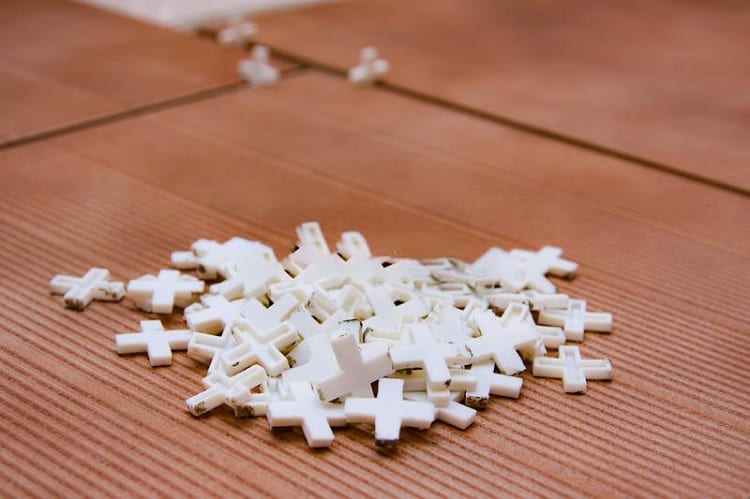
There is a lot of flexibility in which grout width you should choose. Here are some of the ones that you can consider:
- If you are using small tiles at 8 by 8 inches, they usually come with built-in lugs that don’t need spacers. For a standard look, you should have 1/8 inch grout lines for the floor and 1/16 inch for the walls.
- If you are using regular sized tiles from 16 by 16 inches to 12 by 12 inches, you can go up by 3/16 inches, depending on the overall look you want.
- If you are using large-sized tiles (larger than 16 by 16 inches), you will be able to get with very thin grout lines of 1/16 inches to 1/32 inches. This can help make the space look like a solid floor.
Conclusion
It is important to be precise when it comes to laying out tiles.
This is because tiles can expand with changes in temperature.
You should be careful of the grout lines as well as the tile sizes.
This will ensure that your bathroom ends up looking aesthetically appealing.
